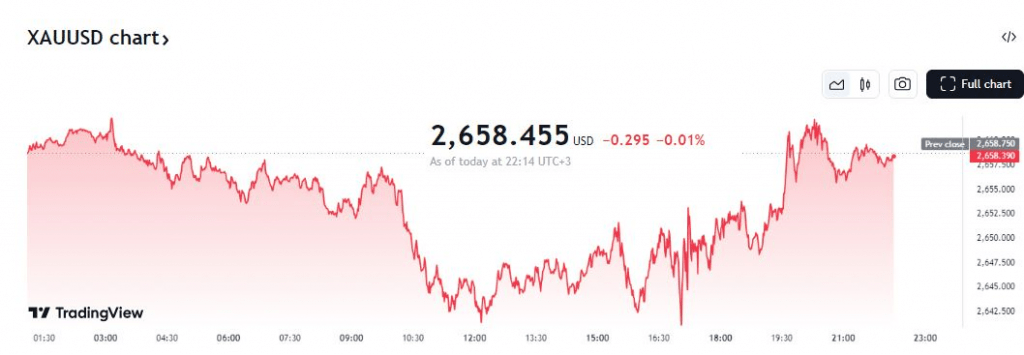Geopolitical Tensions Fuel Safe-Haven Demand
Gold prices have experienced a dramatic surge, surpassing the $2,650 mark, as geopolitical tensions escalate in the Middle East. The ongoing conflict between Israel and Iran, coupled with the threat of wider regional instability, has driven investors to seek refuge in safe-haven assets like gold. The market’s response to these developments has been swift and decisive, reflecting growing concerns about global security and economic stability.

US Economic Data Adds to Uncertainty
While the escalating tensions in the Middle East have been the primary catalyst for gold prices, the US economic landscape has also contributed to market uncertainty. Mixed economic data, including a softening labor market and a slight improvement in business activity, has created confusion about the Federal Reserve’s monetary policy path. The central bank’s decision to raise interest rates to combat inflation has put downward pressure on gold prices in the past, but the recent economic data has introduced a degree of ambiguity.
Fed Officials Maintain Hawkish Stance
Despite market expectations for a significant rate cut in November, Federal Reserve officials have maintained a hawkish stance, suggesting that further interest rate hikes may be necessary to bring inflation back to target. This hawkish rhetoric has tempered investor optimism and put upward pressure on Treasury yields, which in turn has supported the US dollar. The stronger dollar can put downward pressure on gold prices, as it makes the metal more expensive for foreign buyers.
Wider Implications of Rising Gold Prices
The surge in gold prices has broader implications for the global economy. As gold is often seen as a hedge against inflation and economic uncertainty, its rise can signal growing concerns about these factors. Additionally, higher gold prices can impact other markets, such as the stock market and the currency market. For example, rising gold prices can lead to increased costs for businesses that use gold in their products or operations.
Role of Central Banks, Government Policies
Central banks and governments around the world play a significant role in influencing gold prices. Central banks can buy or sell gold as part of their foreign exchange reserves, which can impact the price of the metal. Additionally, government policies, such as fiscal stimulus or monetary policy, can also affect gold prices. For instance, if a government decides to print more money to stimulate the economy, this can lead to inflation and increase demand for gold as a hedge against rising prices.
Investor Sentiment and Market Speculation
Investor sentiment and market speculation can also play a significant role in driving gold prices. If investors believe that gold prices will continue to rise, they may be more likely to buy the metal, which can push prices even higher. Conversely, if investors become bearish on gold, they may sell their holdings, which can put downward pressure on prices.
The recent surge in gold prices is a complex phenomenon driven by a combination of factors, including geopolitical tensions, economic uncertainty, and central bank policies. While the outlook for gold prices remains uncertain, the metal’s role as a safe-haven asset and its potential to hedge against inflation and economic turmoil make it a valuable asset for many investors.
As the global economic landscape continues to evolve, it is essential for investors to carefully consider the factors that could impact gold prices and make informed decisions about their investments.
 Noor Trends News, Technical Analysis, Educational Tools and Recommendations
Noor Trends News, Technical Analysis, Educational Tools and Recommendations





